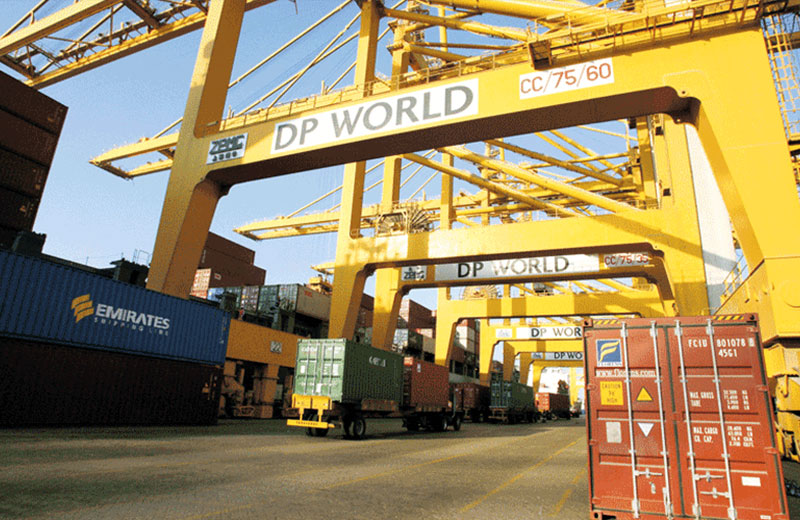DP World’s transshipment terminal at the Indian port of Cochin is savoring the fruits of a vibrant coastal market environment propelled by liberalized cabotage regulations enacted just over a year ago.
A new analysis of port data collected by JOC.com shows DP World Cochin, also known as the International Container Transshipment Terminal (ICTT) or the Vallarpadam Terminal, logged the highest growth rate of any terminal or port in the country for domestic transshipment handling in fiscal year 2018-19.
By volume, freight movement at the ICTT hit 24,239 TEU, up from 5,452 TEU in fiscal 2017-18 — a more than four-fold rise.
That brightening outlook is of enormous significance to DP World Cochin, a flagship project that has been essentially designed to recapture Indian cargo transshipped over Sri Lanka’s Port of Colombo and other hub ports in the region.
Additionally, for the Indian government and industry stakeholders championing the entry of foreign-flag tonnage into Indian coastal trade, new data could boost their viewpoint regarding the merits of the cabotage reform. With the May 2018 modified program, foreign-flag ships can transport laden export-import containers for transshipment and empty containers for re-positioning between Indian ports without any specific permission or license.
Investment paying off?
The Dubai-based terminal giant is said to have invested about Rs. 1,600 crore (about $226 million) in the first phase of development at Vallarpadam, with the landlord port spending approximately Rs. 1,700 crore, in phases, toward dredging work. The ICTT currently features 1,969 feet of quay, water depth of 48 feet, 109 acres of backup area, four quay cranes, 15 rubber-tire gantry cranes, three reach stackers, and two on-dock intermodal rail-sidings, offering a capacity of 1 million TEU annually.
ICTT opened in February 2011 but struggled to position itself as an effective counter to Colombo due to limited mainline connectivity — a shortcoming the company blamed on excessively high vessel-related charges at the port relative to foreign counterparts. Although arguably insufficient to bridge the gap with global peers, those concerns have been somewhat mitigated, with the Cochin authority now offering special discounts on marine charges up to 85 percent for new regular calls and up to 70 percent for ad-hoc calls on certain trade lanes, more particularly into the US East Coast.
“To attract the next generation deep draft vessels, additional steps need to be taken such as competitive marine charges as other hubs like Colombo enjoy pricing flexibility and offer more competitive rates compared to Indian ports,” DP World Subcontinent said in a recent statement to JOC.com. “Along with this, a move toward a market-determined tariff, investment in state-of-the-art technology, and maintaining deeper drafts are among other measures that will boost the sector to make it more attractive and support India’s trade growth.”
Company officials were not available for comment.
Coastal networks boosting Cochin
With cargo aggregation gaining traction on the strength of improved coastal networks, long-haul mainline operators have lately shown greater interest in adding regular, fixed-day weekly calls at Cochin along with other Indian eastern ports. The South-East India – Europe Express (IEX) Service, a nine-vessel deal between Hapag-Lloyd and Ocean Network Express (ONE) due to start in late October from India, is the latest major customer service gain for DP World Cochin.
That impending call follows the addition of an intra-Asia call from Wan Hai Lines at Cochin on its China-India II (CI2) Service earlier this year.
To support its hub operations, DP World Cochin has already established an expansive, countrywide feeder network, connecting to and from Hazira, Pipavav, Kandla, Nhava Sheva (Jawaharlal Nehru Port Trust), Goa, Mangalore, Beypore, Chennai, Tuticorin, Kattupalli, Krishnapatanam, and Visakhapatnam.
The company has also been refocusing on productivity to offer greater economies of scale for its customers. For example, the terminal recently hit an all-time gate productivity of 2,400 truck moves (in and out) on a single day, surpassing the usual average of about 1,750 transactions per day.
That renewed effort is reflected in a 9 percent year-over-year upswing in throughput at ICTT during April-July, to 203,148 TEU from 186,831 TEU, data shows.
Transshipment activity at other Indian ports has also been trending up in recent months, powered by the cabotage relaxation. July data released by the Container Shipping Lines Association (CSLA) is the latest evidence of the uptick in direct shipping. According to the foreign carrier group, Indian ports regained a total of 102,074 TEU usually shipped through foreign hub ports last month, up from 14,543 TEU for the same month in 2018.
However, a deeper analysis of that data refuels what has already become the subject of heated stakeholder debates — cost gains for cargo interests, as out of the estimated incremental volume, empty container moves represented 36 percent, or 36,748 TEU, in July, steadily increasing from 30 percent in June and 25 percent in May. At issue: Carriers are increasingly turning to coastal services for their equipment repositioning needs, an otherwise costly and complex logistics challenge for them when moving via overland networks.








